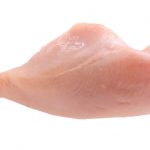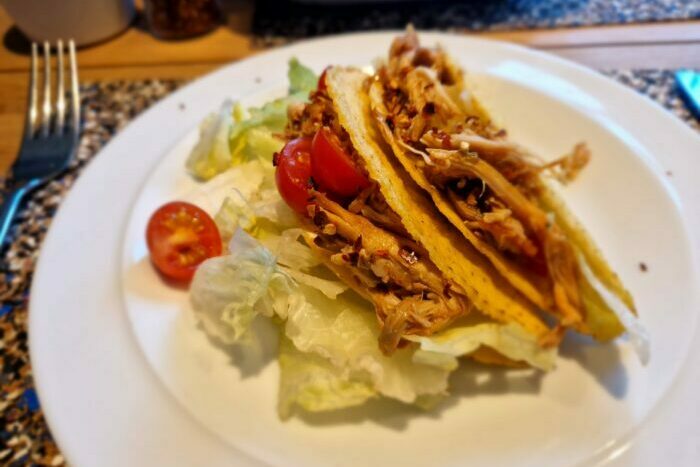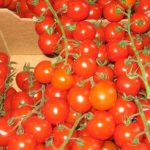Kids love to create their own dinner, and this is a real hands-on winner! So easy to pop in the slow cooker and leave it to do it’s magic ... and then create a delicious meal with minimal effort.
The chicken is just as good served in wheat tortialla wraps and, if you have any leftovers, it’s perfect for a lunchbox wrap fillilng the next day too ... double win!
Skills Check
Follow a recipe; follow food safety & hygiene rules; tidy away; cut using bridge/claw technique safely.
Equipment
Slow cooker, chopping board, kitchen scissors, knife, garlic press, measuring spoons, wooden spoon, plate/bowl, 2 forks.
Ingredients (serves 4):
- 8 chicken thighs on the bone, skin removed
- 2 garlic cloves, crushed
- 125g mild tomato salsa, plus extra to serve
- 1 large green chilli, de-seeded and finely chopped
- 1 tsp smoked paprika
- 1/2 tsp ground cumin
- Black pepper, to taste
- 8 corn taco shells
Optional toppings: soured cream, Iceberg lettuce, cherry tomatoes, guacamole, grated cheese, chilli flakes
Method
- Remove the skin from the chicken and discard.
- Place the chicken, garlic, salsa, chilli, paprika, cumin and pepper in the slow cooker pot. Cover with the lid and cook on low for 7 hours, or until the chicken is tender and there is no pink meat.
- Carefully remove the chicken pieces and discard the bones. Using two forks shred the chicken meat, and moisten it with a little of the cooking juices/salsa.
- To serve, place some chopped Iceberg lettuce, and the shredded chicken in the taco shell, and top with a teaspoon of sour cream and/or salsa.
So thinking about Chicken Taco ...

Tomatoes are really good for us containing a wide range of vitamins and minerals. They also contain lycopene, a type of antioxidant which can help protect our bodies from disease.
Tacos are corn-based products that fall in the carbohydrate food group. They do have fat and salt added in processing so enjoy them in sensible portion sizes.
Nutritional Information
| Energy | 1970kJ / 469kcal | 23% | |
| Med | Fat | 19.0g | 27% |
| Med | Saturated Fat | 5.8g | 29% |
| Low | Sugars | 5.7g | 6% |
| High | Salt | 2.6g | 43% |
per 272g serving
% of an adult's reference intake
Typical values per 100g: Energy 724kJ / 172kcal
Notes
A traffic light system is used on nutrition labels to make it easier to see which foods and drinks are lower in calories, fat, sugar and salt. Try and choose more ‘greens’ and ‘ambers’ and fewer ‘reds’, and stick to smaller portions of ‘reds’.
Just because a recipe or a food has a red traffic light doesn’t mean you shouldn’t eat it. Understanding why a food or recipe might have a red light can be helpful. For example oily fish is high in total fat and so any recipe containing oily fish is likely to be ‘red’ for fat. But it is recommended that we eat oily fish at least once a week because the type of fat it contains is beneficial for our health.
% Reference Intakes are also shown. Reference Intakes are guidelines about the approximate amount of particular nutrients and energy required for a healthy diet (based on an average-sized woman doing an average amount of physical activity). Most children will require less than these Reference Intakes. The contribution of one serving of a food or drink to the Reference Intake for each nutrient is expressed as a percentage.




